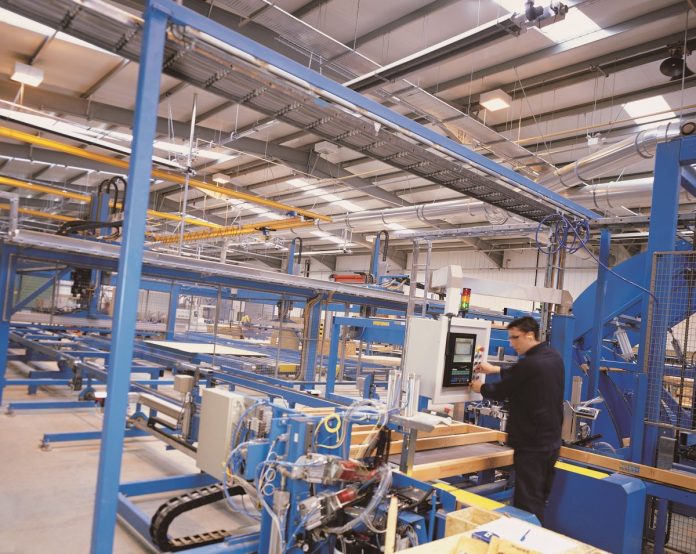Utilising BIM and DfMA (Designing for Manufacture and Assembly) has wide-ranging benefits as discussed by Nick Milestone, Board Director for the Structural Timber Association
Designing for Manufacture and Assembly (DfMA) is used as the foundation for concurrent engineering processes to simplify and fully optimise the structure wherever possible, to reduce manufacturing and assembly costs and to quantify improvements. This process helps to identify, calculate and eliminate waste or inefficiency in the building design. But utilising BIM and DfMA can unlock even greater efficiencies.
Optimising structural specification performance
DfMA is an approach that facilitates greater offsite manufacturing, minimising onsite construction. Buildings are constructed more rapidly and safely – the process delivers both resource and cost efficiencies but does not impede creative design aspirations or compromise on quality.
As well as delivering projects faster and lowering costs, together with improving quality and sustainability – the use of DfMA techniques also results in better operational and in-use outcomes.
Crucial to the BIM and DfMA approach is information transfer and share – therefore designing with BIM is essential to unlocking more efficient methods of creating and maintaining assets. BIM embeds key product details and asset data to create 3D models that can be used for effective management of information throughout a project lifecycle – from earliest concept through to operation.
This is of particular relevance in hybrid timber structures where bespoke connections are designed to join different materials. These projects require high levels of technical advancement, innovation and rigorous planning through a strict programme of works. BIM technology and CNC machines are used to ensure that structures are manufactured to exacting tolerances to guarantee the details of the connections are precise.
Adopting an offsite approach supported by DfMA principles and harnessing the power of BIM technology – simply means design rationalisation, materials optimisation and just-in-time delivery planning to achieve high rates of productivity on site.
The discipline and collaborative working that BIM requires and facilitates are ideally suited to the needs of pre-fabrication regarding early coordination and three-dimensional design information – particularly when using solid wood as the core structural component. The output of the BIM design process, the IFC model – can now be directly imported into the fabrication software eliminating the time-consuming translation of engineer’s information into cut lists and assembly drawings. Further to this, it reduces the risk of errors in the process and the need for cross-checking.
The STA firmly believe that the implementation of BIM is a progressive step that helps to challenge outdated assumptions about the construction sector and encourage more young professionals into the industry. BIM will generate savings in the long term. Initially, it will require investment, but the overwhelming message has been that companies at every level of the supply chain should invest in digital technology required by the BIM process sooner rather than later, or risk being left behind.
At a time when our industry is facing a skills shortage, taking the build offsite into a factory controlled environment reduces the levels of resource required and is not dependent on traditional construction skills. By developing solutions that are ‘assembled’ rather than ‘constructed’ offers the prospect of using fewer people in a more controlled and safer environment.
When combined with increased productivity and enhanced quality – it is easy to see why the recent housing White Paper and the Farmer Report — aptly entitled Modernise or Die – outlined the government’s commitment to support offsite factory built homes.
Structural Timber Association
According to the findings of a recent survey by the Structural Timber Association, 74% of the UK’s contractors, developers, architects and registered providers revealed they plan to increase specifications of structural timber. As a robust yet lightweight solution, the use of structural timber reduces the loading on foundations and delivers multiple benefits including speed of build, enhanced quality, together with improved thermal, acoustic and performance benefits.
There is a wealth of information available to construction professionals on the Structural Timber Association website, from advice on structural timber systems to market reports and an online member’s enquiry system. For more information visit: www.structuraltimber.co.uk
Nick Milestone
Board Director
Structural Timber Association (STA)
Tel: 01259 272140
office@structuraltimber.co.uk














